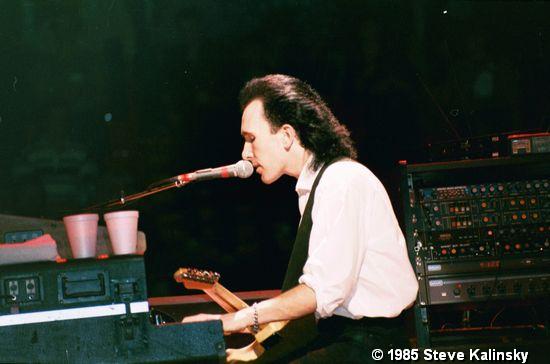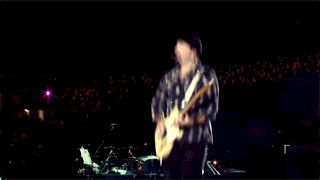|
Edge: Stage and Studio |
|
YAMAHA | CP-70 & CP-70B | piano
The Yamaha CP70 Electric Grand Piano (also known as the Yamaha CP-70) was first introduced to
the market in the mid-70's and production was ceased in the mid-80's. This particular unit has a 1983 serial #. The Yamaha
CP70B model (also known as the Yamaha CP-70B) included several improved features such as balanced outputs (hence the
B added to CP70) and included an improved preamp, etc. There was also a CP70M model that included midi output, and EQ, etc.
Very few of these units were made. The Yamaha CP80 (or CP-80) was the big brother of the CP70, and it included
an extra octave of keys (the CP70 has a total of 73 keys). As you can see in the photo's, this piano has real strings, hammers,
wooden keys, and an internal baby grand piano frame. Since it was designed as a stage model, it is covered in black tolex, and comes apart in two separate pieces
that weigh well over 100 lbs a piece. Yes, this piano is very heavy. Amazingly enough, this piano stays in tune very well
if not moved too much or not exposed to too much tempertaure and humidity changes. In the studio it is very stable. I have
yet to tune mine, but will attempt this soon with a Peterson 490 Strobe Tuner. A basic Yamaha piano tuning wrench will work
just fine. Original piano strings can still be purchased directly from Mapes Piano Wire at a very reasonable price. Mapes has been the string supplier for Yamaha pianos for many years. The CP70B is called an electric grand piano, even though it has hammers and strings, because it has a sophisticated
piezo type pick-up system that translates the vibrating strings into an audio signal. This was great for touring because of
the hassle invovled with miking regular heavy, large pianos. You can still hear the piano play acoustically with no power
on, but it isn't as loud as a regular baby grand piano. You can still mike the piano if you'd like, and some people leave
the top off to generate a little musical feedback. Unfortunately, Yamaha ceased part availibilty for these back in 1997. However,
some shops still have them and you can always buy a cheap beater for parts if needed. Dating information via the serail #,
etc. is still available from Yamaha at (800) 854-1569 the the last I checked. The CP70 was originally sold at a $4000 list
price in the mid-70's which translates to around $12,000 to $13,000 in 2002 US dollars. The construction, engineering, and sound of these piano's is simply amazing. The sound of the CP70 is very
unique because of its warm, smooth sustain. It is not nearly as percussive as many grand piano's, particularly the the Yamaha
C and G series. Since the lowest octave bass strings are shorter than normal, the lowest octave doesn't quite sound like a
regular baby grand piano. The CP70 was the standard touring piano in the 70's and 80's. It was used by just about every artist
and group at one time or another in the studio or on the road. John Paul Jones of Led Zeppelin used a CP70B on the 1977, 79-80
tours in place of the Steinway he used on the 1975 tour. He actually had a white case built around it to make it look like
a full size grand piano next to his massive Yamaha GX-1 synth. This can be seen on the Knebworth video, and at the following
cool site dedicated to Led Zeppelin keyboards and synths. Other users in the 70's include musicians that range from Stevie Wonder, ELO, Genesis, Boston, Hall and Oates,
Journey, etc. In the 80's you had bands such as Asia, U2 (songs like New Years Day, October, etc.), and british pop such as
Howard Jones, others such as Simple Minds during that era of music. The musical style didn't matter. It was used by almost
everyone. The good news is that these units are still fairly easy to find on the used market from $400 to $1000. Be very wary
of the road warrior beat up types. There are plenty of nice CP70B's around for about $500 if you're patient. The CP80 is worth
a little more, and the CP70M is probably worth around $1200. For what you're getting, I think that the CP70B is by far the
best piano deal on the market. |
||||||||||||||||||
|
|
||||||||||||||||||


